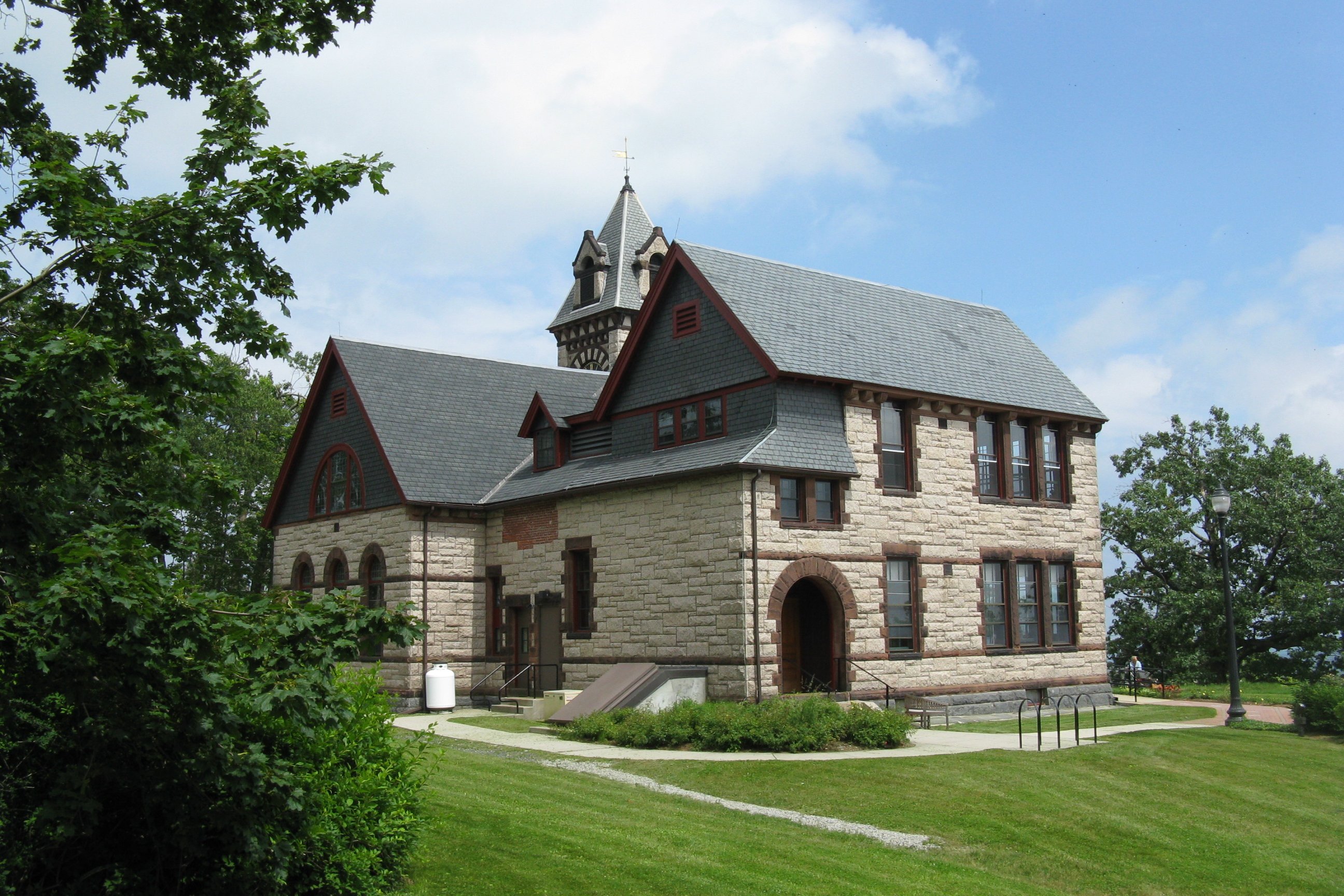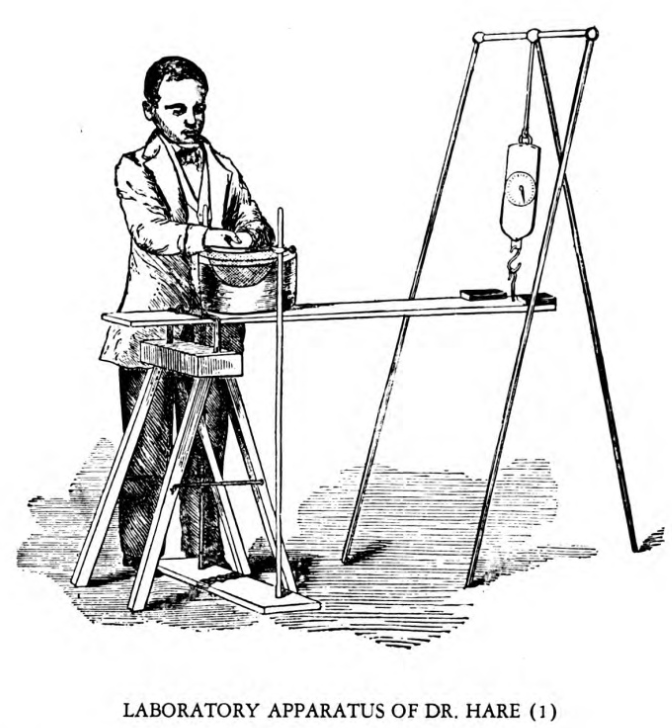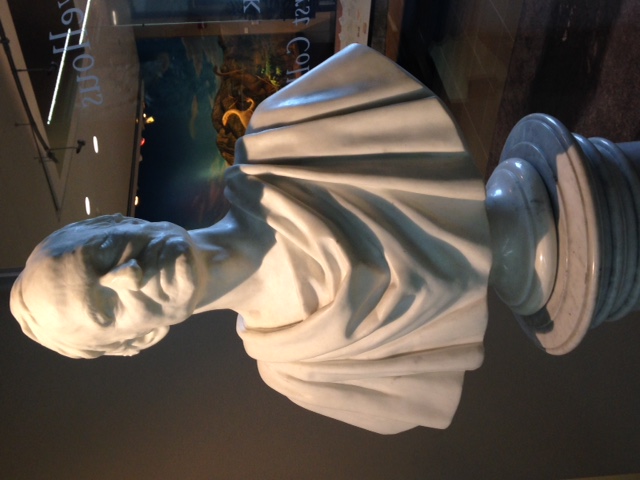|
Daniel Davis Jr.
Daniel Davis Jr. (February 8, 1813 – March 22, 1887) was an American science instrument maker, electrical engineer, mechanic, photographer, daguerreotypist and ambrotypist. Through the course of his work he became known for his practical knowledge and understanding of electromagnetic principles. He worked with college professors, notable electricians and popular scientists of the nineteenth century. He was consulted for practical knowledge on mechanics and electricity by inventors, including Samuel Morse for his telegraph and Elias Howe for his sewing machine. He was the first man in the United States to work with gold and silver electroplating, patented a method for coloring daguerrotypes through electroplating in 1842, and sold franchises to others for photographic studios. Davis published an exhaustive work on electromagnetism that became a textbook for academies, high schools, and colleges. Early life Daniel Davis Jr. was born on February 8, 1813, in Princeton, Massac ... [...More Info...] [...Related Items...] OR: [Wikipedia] [Google] [Baidu] |
William Francis Channing
William Francis Channing (February 22, 1820 – March 20, 1901) was an American activist, electrical researcher, scientist, physician, and inventor. He invented the first citywide electric fire alarm system. Channing worked with Alexander Graham Bell in developing the telephone. Early life Channing was born in Boston on February 22, 1820. He was the son of William Ellery Channing, the Unitarian preacher, and Ruth Gibbs. He was cousin of William Henry Channing, Unitarian clergyman, writer and philosopher. Mid life Channing began to study at Harvard and graduated in 1839. He decided to follow medicine instead and went to the University of Pennsylvania. Channing did a thesis on the "Application of Chemistry to Physiology" in 1844 for his doctorate and received a degree in medicine. Channing was an assistant on the first geological survey of New Hampshire during 1841–42. He was associated with Henry Ingersoll Bowditch in the editorship of the ''Latimer Journal'' in Boston f ... [...More Info...] [...Related Items...] OR: [Wikipedia] [Google] [Baidu] |
Princeton, Massachusetts
Princeton is a town in Worcester County, Massachusetts, United States. It is bordered on the east by Sterling and Leominster, on the north by Westminster, on the northwest by Hubbardston, on the southwest by Rutland, and on the southeast by Holden. The preeminent landmark within Princeton is Mount Wachusett, which straddles the line between Princeton and Westminster but the entrance to which is within Princeton. According to tradition, in 1675, Mary Rowlandson was ransomed upon Redemption Rock, now within the town of Princeton, by King Philip. The population was 3,495 at the 2020 census. Princeton is a rural exurb, serving as a bedroom commuter town for nearby cities such as Worcester, Gardner, and Boston. History During King Philip's War in 1676, Native Americans brought their captive Mary Rowlandson to Princeton to release her to the colonists at Redemption Rock. The town of Princeton was incorporated in 1759, out of land that was previously part of Rutland. It was named ... [...More Info...] [...Related Items...] OR: [Wikipedia] [Google] [Baidu] |
Robert Hare (chemist)
Robert Hare (January 17, 1781 – May 15, 1858) was an early American chemist and professor. Biography Hare was born in Philadelphia, Pennsylvania, on January 17, 1781. He developed and experimented with the oxy-hydrogen blowpipe, with Edward Daniel Clarke of Oxford, shortly after 1800. He married Harriett Clark and had six children. In 1802, Hare was elected a member of the American Philosophical Society. He was a professor at the University of Pennsylvania between 1810 and 1812 and between 1818 and 1847. By the 1820s, Hare had developed the "galvanic deflagrator", a type of voltaic battery having large plates used for producing rapid and powerful combustion.Kneeland, Timothy W. (2008). ''Robert Hare: Politics, Science, and Spiritualism in the Early Republic''. The Pennsylvania Magazine of History and Biography. Vol. 132, No. 3. pp. 245-260. He was elected an Associate Fellow of the American Academy of Arts and Sciences in 1824. Hare died in Philadelphia on May 15, 1858. Spir ... [...More Info...] [...Related Items...] OR: [Wikipedia] [Google] [Baidu] |
John Plumbe
John Plumbe Jr. (occasionally Plumb; July 13, 1809 – May 29, 1857) was a Welsh-born American entrepreneurial photographer, gallerist, publisher, and an early advocate of an American transcontinental railroad in the mid-19th century. He established a franchise of photography studios in the 1840s in the U.S., with additional branches in Paris and Liverpool. He created a lithographic process for reproducing photographic images, called the "plumbeotype." Biography Plumbe was born in Castle Caereinion, Powys, Wales in 1809, to John Plumbe and Frances Margaretta Atherton. The family moved to Philipsburg, Pennsylvania in 1821, and later to Dubuque, Iowa. Vision for a transcontinental railroad He began his career as a civil engineer. "He studied civil engineering while still in his late teens and by 1829 was surveying sites for future railroad routes in the southern and eastern portions of the country. About 1836 he relocated to the Wisconsin territory, where he became and advocate ... [...More Info...] [...Related Items...] OR: [Wikipedia] [Google] [Baidu] |
Newspapers
A newspaper is a periodical publication containing written information about current events and is often typed in black ink with a white or gray background. Newspapers can cover a wide variety of fields such as politics, business, sports and art, and often include materials such as opinion columns, weather forecasts, reviews of local services, obituaries, birth notices, crosswords, editorial cartoons, comic strips, and advice columns. Most newspapers are businesses, and they pay their expenses with a mixture of subscription revenue, newsstand sales, and advertising revenue. The journalism organizations that publish newspapers are themselves often metonymically called newspapers. Newspapers have traditionally been published in print (usually on cheap, low-grade paper called newsprint). However, today most newspapers are also published on websites as online newspapers, and some have even abandoned their print versions entirely. Newspapers developed in the 17th ... [...More Info...] [...Related Items...] OR: [Wikipedia] [Google] [Baidu] |
Daguerreotype
Daguerreotype (; french: daguerréotype) was the first publicly available photographic process; it was widely used during the 1840s and 1850s. "Daguerreotype" also refers to an image created through this process. Invented by Louis Daguerre and introduced worldwide in 1839, the daguerreotype was almost completely superseded by 1860 with new, less expensive processes, such as ambrotype ( collodion process), that yield more readily viewable images. There has been a revival of the daguerreotype since the late 20th century by a small number of photographers interested in making artistic use of early photographic processes. To make the image, a daguerreotypist polished a sheet of silver-plated copper to a mirror finish; treated it with fumes that made its surface light-sensitive; exposed it in a camera for as long as was judged to be necessary, which could be as little as a few seconds for brightly sunlit subjects or much longer with less intense lighting; made the resulting lat ... [...More Info...] [...Related Items...] OR: [Wikipedia] [Google] [Baidu] |
Boston Post 12 20 1842
Boston (), officially the City of Boston, is the state capital and most populous city of the Commonwealth of Massachusetts, as well as the cultural and financial center of the New England region of the United States. It is the 24th- most populous city in the country. The city boundaries encompass an area of about and a population of 675,647 as of 2020. It is the seat of Suffolk County (although the county government was disbanded on July 1, 1999). The city is the economic and cultural anchor of a substantially larger metropolitan area known as Greater Boston, a metropolitan statistical area (MSA) home to a census-estimated 4.8 million people in 2016 and ranking as the tenth-largest MSA in the country. A broader combined statistical area (CSA), generally corresponding to the commuting area and including Providence, Rhode Island, is home to approximately 8.2 million people, making it the sixth most populous in the United States. Boston is one of the oldest municip ... [...More Info...] [...Related Items...] OR: [Wikipedia] [Google] [Baidu] |
Edward Hitchcock
Edward Hitchcock (May 24, 1793 – February 27, 1864) was an American geologist and the third President of Amherst College (1845–1854). Life Born to poor parents, he attended newly founded Deerfield Academy, where he was later principal, from 1815 to 1818. In 1821 he was ordained as a Congregationalist pastor and served as pastor of the Congregational Church in Conway, Massachusetts, 1821–1825. He left the ministry to become Professor of Chemistry and Natural History at Amherst College. He held that post from 1825 to 1845, serving as Professor of Natural Theology and Geology from 1845 until his death in 1864. In 1845, Hitchcock became President of the College, a post he held until 1854. As president, Hitchcock was responsible for Amherst's recovery from severe financial difficulties. He is also credited with developing the college's scientific resources and establishing its reputation for scientific teaching. In addition to his positions at Amherst, Hitchcock was a we ... [...More Info...] [...Related Items...] OR: [Wikipedia] [Google] [Baidu] |
Francis Thomas Bacon
Francis Thomas Bacon OBE FREng FRS (21 December 1904 – 24 May 1992) was an English engineer who in 1932 developed the first practical hydrogen–oxygen fuel cell. It is used to generate power for space capsules and satellites. Life and works Francis Thomas Bacon was born in 1904 at Ramsden Hall, Billericay, Essex, England. An engineer at Trinity College, Cambridge, in 1932 he developed the fuel cell which was used as part of the Apollo moon project in the 1960s. Fuel cells were first demonstrated by Sir William Robert Grove in 1839, but his invention lay largely dormant for over 100 years until it was revived by Bacon. The alkaline fuel cell (AFC), also known as the Bacon fuel cell after its inventor, has been used in NASA space programs since the mid-1960s to generate power for satellites and space capsules. The U.S. President Richard Nixon welcomed Bacon to the White House, and told him; "Without you Tom, we wouldn't have gotten to the moon.” After the successful lu ... [...More Info...] [...Related Items...] OR: [Wikipedia] [Google] [Baidu] |
Moses G
Moses hbo, מֹשֶׁה, Mōše; also known as Moshe or Moshe Rabbeinu (Mishnaic Hebrew: מֹשֶׁה רַבֵּינוּ, ); syr, ܡܘܫܐ, Mūše; ar, موسى, Mūsā; grc, Mωϋσῆς, Mōÿsēs () is considered the most important prophet in Judaism and one of the most important prophets in Christianity, Islam, the Druze faith, the Baháʼí Faith and other Abrahamic religions. According to both the Bible and the Quran, Moses was the leader of the Israelites and lawgiver to whom the authorship, or "acquisition from heaven", of the Torah (the first five books of the Bible) is attributed. According to the Book of Exodus, Moses was born in a time when his people, the Israelites, an enslaved minority, were increasing in population and, as a result, the Egyptian Pharaoh worried that they might ally themselves with Egypt's enemies. Moses' Hebrew mother, Jochebed, secretly hid him when Pharaoh ordered all newborn Hebrew boys to be killed in order to reduce the population of ... [...More Info...] [...Related Items...] OR: [Wikipedia] [Google] [Baidu] |
John White Webster
John White Webster (May 20, 1793 – August 30, 1850) was an American professor of chemistry and geology at Harvard Medical College. In 1850, he was convicted of murder in the Parkman–Webster murder case and hanged. Biography Born in Boston, Massachusetts, Webster was from a well-connected family: his grandfather was a successful merchant; his mother, Hannah (White) Webster, was a Leverett; his wife's sister married into the Prescotts; he was friends with the Shaws;, and his Unitarian pastor was the Reverend Francis Parkman Sr. (brother of George). Webster, indulged as a child and pampered in youth, had a petulant and fussy disposition, but was known for his kindly nature. He graduated from Harvard College in 1811. In 1814, he was among the founders of the Linnaean Society of New England, and was appointed cabinet-keeper of the society's quickly growing collection of specimens in Joy's Buildings in Boston. He graduated from Harvard Medical College in 1815. Around 1815, ... [...More Info...] [...Related Items...] OR: [Wikipedia] [Google] [Baidu] |







